Antwerp, the cultural hub of Flanders, the Dutch-speaking region of northern Belgium, is both a thriving economic port city and a premier historical hub for Belgian craftsmanship and art.
Rubens, van Dyck, and Jordaens were formerly residents of the city, and centuries of trade and commerce have left a legacy of architectural splendor, including the majestic cathedral, the town hall, and numerous other noteworthy historical structures in the old town center.
The main tourist attractions for art enthusiasts and cultural vultures in Antwerp are its top-notch museums, which are a must-visit location on any trip to Belgium.
The city's paintings, in particular, are a highlight of any visit. They are an unmatched collection of masterpieces from the 15th to the 17th centuries, when the South Holland school of painters was at its pinnacle.
This list of the top attractions and things to do in Antwerp will help you explore the area and the best locations to go.
1.Grand Place, (Grote Markt)
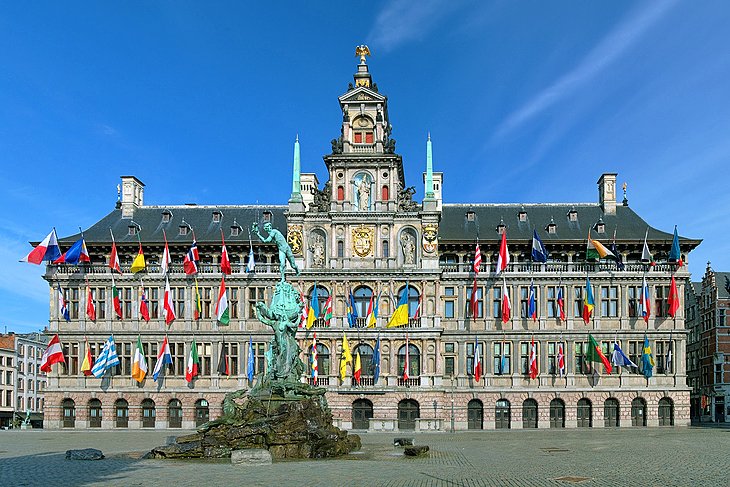
The center of the old town is Antwerp's Grand Square (Grote Markt), which is home to the town hall and various guild houses. The elaborate Brabo Fountain, which was built in 1887 by Jef Lambeaux and shows the Roman soldier Silvius Brabo flinging the giant Antigonus' severed hand into the Scheldt, is situated in the center.
Cornelis Floris de Vriendt constructed the Town Hall (or Stadhuis), which dominates the western side of the square, between 1561 and 1565. Inside, the chambers are decorated with 19th-century paintings by H. Leys representing the history of Antwerp.
Most of the structures along the Grote Markt, with the exception of the Stadhuis, were once guild houses (gildehuizen), which served as the city's guilds' initial administrative centers in the 16th and 17th centuries.
The Gildehuis der Kuipers (Coopers' House No. 5), the Huis van de Schutters (Archer's House No. 7) and the Huis van de Kruideniers (Grocers' House No. 11) are a few of the most intriguing guild houses on the north side.
The Ethnographic Museum, which promotes non-European cultures, is close by, and the Folk Museum, which is dedicated to the many traditional arts and crafts present in the Antwerp region, is located just behind the town hall on the Gildekamersstraat.
2. Holy Lady of the Cathedral
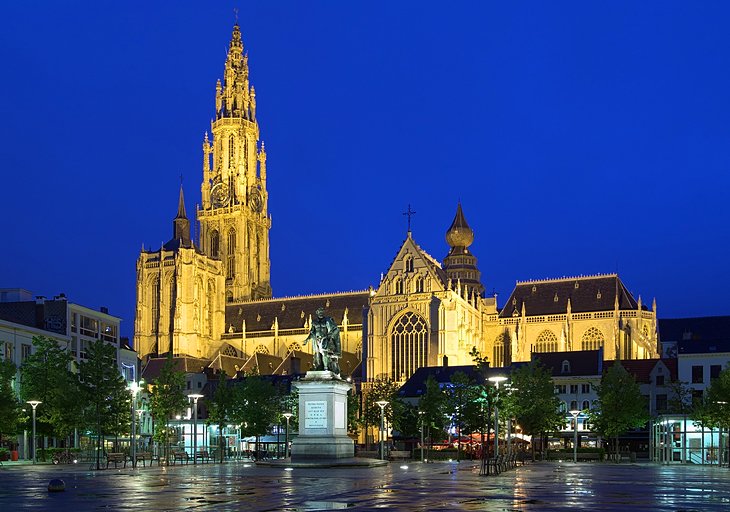
The greatest Gothic structure in Belgium is the Cathedral of Our Lady (Onze Lieve Vrouwkathedraal).
The cathedral's construction began in 1352 and lasted until 1521. Its architects and master builders included Jacob van Thienen, Pieter Appelmans, Jan Tac, Everaert Spoorwater, Hermann and Dominic de Waghemakere, and Rombout Keldermans.
The church has lost many of its most priceless items of art as a result of significant damage that occurred on numerous occasions over the years. The destruction began with a fire in 1533, continued with Calvinists in 1581, dissident iconoclasts in 1566, and French Republican soldiers in 1794 and 1800.Unfortunately, very few of the stolen items have ever been found.
All of the carved masonry on the outside of the structure is modern because exterior restoration work started in the 19th century. The nave was the first area to get interior work, which started in 1965 and was finished in 1983.
The best remaining pieces of art are on show in the cathedral treasury as well as throughout the nave and aisles.
3. The Home by Rubens (Rubenshuis)
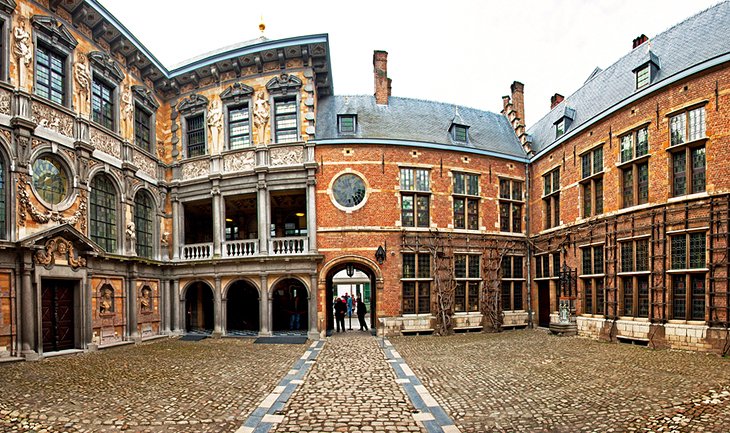
After marrying Isabella Brant, Peter Paul Rubens purchased No. 9 in 1610, and he remained there until his death in 1640. He set up the home to suit his preferences and needs, locating his residence to the left of the front door and converting the right wing into his studio.
It was put to use as a prison following the French Revolution and deteriorated further after that. In 1937, the City of Antwerp finally acquired Rubens' Home (Rubenshuis), which was painstakingly rebuilt between 1939 and 1946 with the help of antiquated paperwork and plans.
The 10 rooms are decorated in period-appropriate furnishings and hold a sizable collection of works by Rubens and his contemporaries. Self-portrait by Anthony van Dyke, Adam and Eve, and The Annunciation, all by Rubens, as well as Peasant Drinking by Adriaen Brouwer, are a few works you shouldn't miss. Many works by Rubens and others by his pupils can be found in the spacious studio.
Outdoors, the home's formal grounds have undergone thorough restoration in an effort to faithfully recreate the garden that existed while Rubens lived there. After seeing the mansion, it's a nice place for a stroll.
4. Visit the aan de Stroom Museum (MAS)
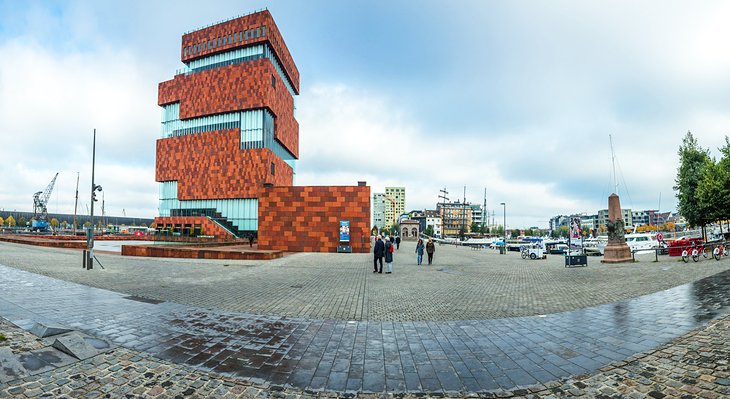
The municipal museum in Antwerp is housed in a stunning piece of modern construction that has a geometric layout made of wave-shaped glass panels and variegated stone. This 10-story structure, which stands on the site of the historic Hanseatic warehouse and resembles a child's block puzzle, overlooks the harbor.
The museum's displays cover a wide range of subjects. On the fifth floor, there is a display on the city's culinary past, as well as information about Antwerp's historic status as the world's greatest trading and shipping port.
Visitors can enjoy a full 360-degree view of the city and the harbor from the rooftop, which is open on top but protected by glass walls. On this rooftop, you can also discover the Saluting Admiral Couple sculpture by local artist Guillaume Bijl.
Other displays explore global issues, such as how different cultures throughout the world celebrate rites of passage and how mankind has approached death and spirituality throughout history.
The largest collection of pre-Columbian American art in Europe is housed on the eighth level and focuses on the interaction between indigenous societies and their gods.
Together with the permanent collection, MAS frequently presents a schedule of temporary exhibitions covering a variety of topics.
On the second floor of the museum, there is a special storage area where guests may view the racks containing more than 180,000 objects that have not yet been set up as exhibits. Around 500,000 objects in all are kept in the museum's collection.
5. Take the kids to the Zoo in Antwerp

Antwerp Zoo was established in 1843 and is located in the heart of the city. Due to its large range of species, breeding success, the care given to the animals, who are housed in the most natural setting possible, and last but not least, its architecture, it is recognized as one of the finest zoos in Europe.
While the Art Déco facades of the entrance area are what initially strike the eye, there are other noteworthy structures inside the zoo, including the giraffe and elephant house (1855), which is designed to resemble an Egyptian temple.
The zoo is home to more than 6,000 creatures from 950 different species, including rare breeds like the white rhino, okapi, and mountain gorilla.
One of the best things to do in Antwerp with kids is to take a trip to the zoo.
6. Visit Chocolate Nation to learn about chocolate.
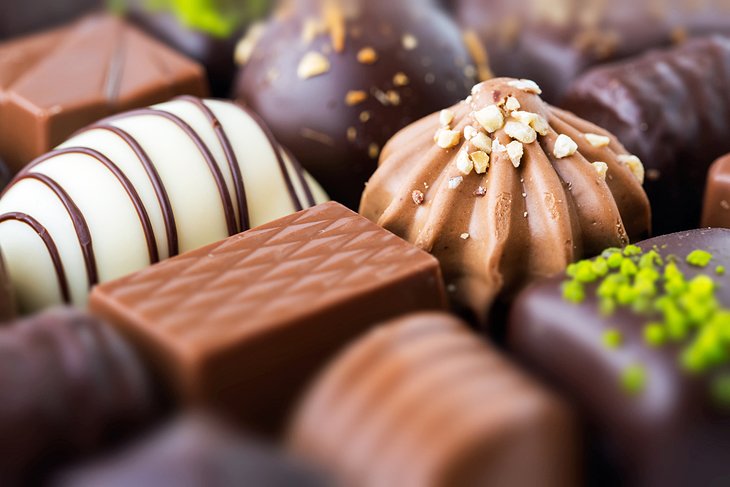
Visitors with a sweet appetite will like this museum. The largest Belgian chocolate museum in the world, Chocolate Nation is situated just across from Antwerp's Central Train Station.
From the equatorial roots of the cocoa bean to the finished product, visitors are introduced to every stage of the process through a multimedia presentation and interactive exhibits. Of course, you can indulge to your heart's content with samples and the museum shop.
The museum also examines the unique role chocolate plays in Belgian tradition and culture, as well as the development of the sweet both domestically and abroad.
Visitors can also sign up for a chocolate workshop with take-home treats. Exhibitions examine the various ways that chocolate is used and presented.
7. The Museum of Plantin-Moretus
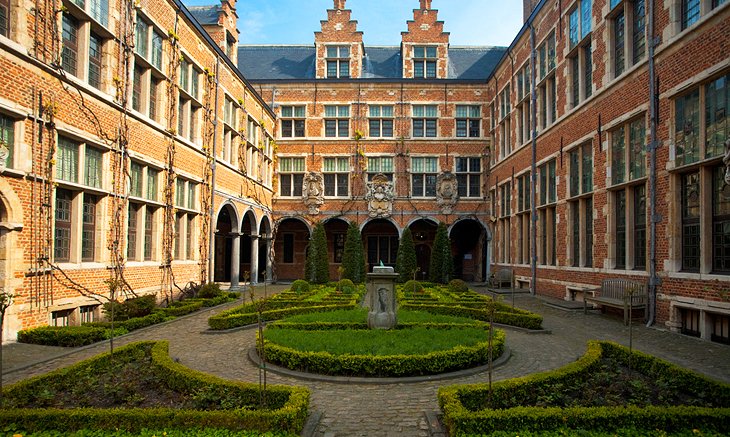
Christophe Plantin, a printer coming from France, settled in a residence south of the Grote Markt Grote that he named "De gulden Passer" or "The Golden Compasses" in 1576. The home that Plantin and the Moretus family heirs resided in is currently regarded as the pinnacle of Flemish Renaissance design.
The Plantin-Moretus Museum, which incorporates printing history and recreates the ambience of an Old Flemish noble home, is housed in the structure today.
This museum is among the most fascinating tourist destinations in Antwerp because of the original furnishings, diverse displays, and most importantly, the mood that still permeates the space because of the close closeness of home and working.
If you're short on time, head straight for Room 7, which explores the formation of the alphabet, the first forms of writing, significant archaeological finds, and manuscripts, all the way up to Johannes Gutenberg and the development of letterpress printing using movable type.
Then, don't miss Room 24, which is a celebration of the art of printing in all of Europe and features a 36-line Gutenberg Bible as its crowning achievement.
8. See the Collection at the Mayer van den Bergh Museum
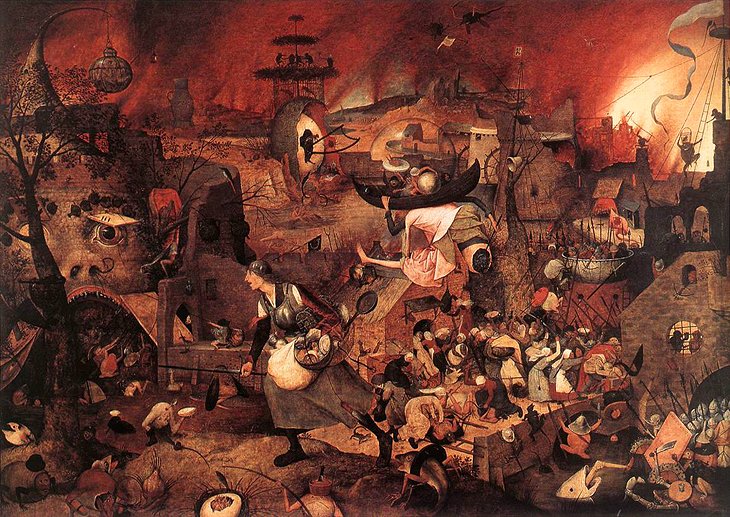
ye.commastmastmastmastmastmastmastmastmastmastmastmastmastmastmastmastmas, etc. These are currently on view on the four floors of the Museum Mayer van den Bergh, a Neo-Gothic home located at Lange Gasthuisstraat 19.
The collection has some exceptional works of art, including paintings by Quentin Massys, Lucas Cranach, Rubens, Jordaens, Bouts, van der Weyden, van Ostade, and Pieter Bruegel the Elder (Dulle Griet and the oldest of the artist's signature works The Twelve Proverbs are both in Room 26).
The exceptional collection of ivories, the rare 16th-century Flemish breviary, the Flemish and French religious sculptures, as well as the polychrome group Christ with St. John (1300) by Henry of Constance and the Holland diptych in Room 14 are all of considerable importance (ca. 1400).
Must Be A Traveller - My Travel Blog: Activities in Antwerp Belgium https://t.co/r1Re2jhaqF … #antwerp #belgium #europe #sightseeing #attractions #travel #holidays pic.twitter.com/LEhv1xtmVI
— MustBeATraveller (@mustbetraveller) January 10, 2019
A collection of porcelain is housed on the second floor, and paintings and furnishings from the 17th century are found on the third.
9. The Royal Academy of Arts (Koninklijk Museum voor Schone Kunsten)
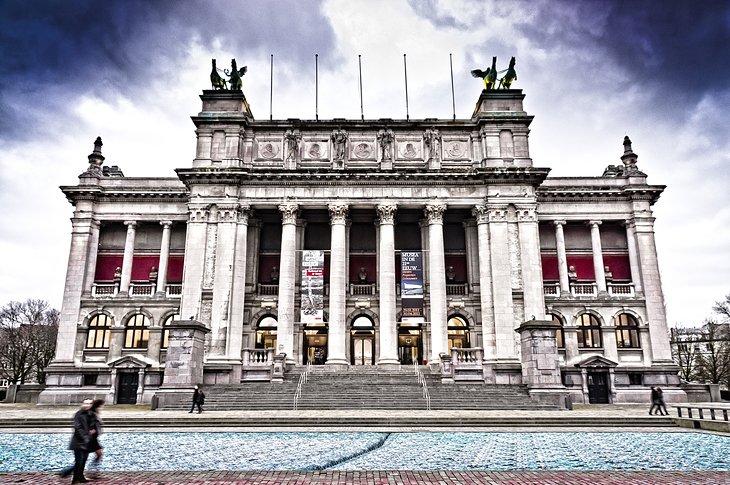
The Lucas Guild of Painters and Sculptors, established in 1442, was the original owner of the majority of the collection now housed inside the Royal Museum of Fine Art (Koninklijk Museum voor Schone Kunsten).
The art pieces amassed over the years came into the ownership of the Academy of Fine Arts after the guild was disbanded in 1773.
To make up for this, the collection received a sizable number of gifts from Florent van Ertborn, a former burgomaster of Antwerp, in the middle of the 19th century, primarily paintings from the 15th and 16th centuries.
https://utravelo.com/en/train-travels-from-new-orleans
When the academy realized it didn't have enough room for the expanded collection, it was decided to construct a new museum.
Two floors serve as home to the collection. Almost 1,500 works of art from the 19th and 20th centuries are mostly on display on the ground level, giving visitors an outstanding overview of the evolution of the plastic arts in Belgium since 1830.
The majority of the more than 1,000 pieces in the Old Masters show on the first level are from the Dutch and Flemish schools.
10. The Red Star Line Museum offers information on migration history.
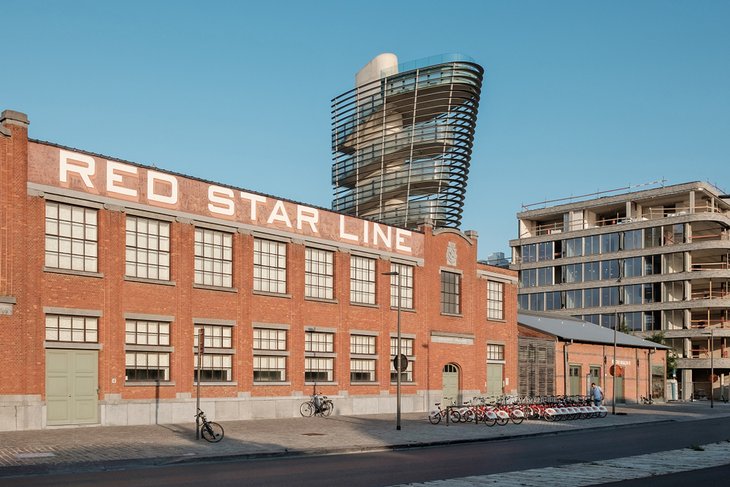
The Red Star Line Museum, one of Antwerp's more recent tourist attractions, debuted in 2013 after more than 20 years of development.
Between 1883 and 1934, people from Belgium and other European nations were transported by the steamers of the Red Star company across the ocean to Canada or the United States in order to flee persecution, destitution, and oppression.
In addition to the actual voyage and process, the museum is devoted to examining the motivations behind people's decisions to leave their homes in search of a better life.
The places where potential passengers were chosen for passage—some of whom were never given the opportunity to board a ship—are among the exhibits. Personal tales of those who did emigrate and those who stayed behind, as well as accounts of the transatlantic voyage, are further topics of interest.
11. The church of St. Paul (Sint-Pauluskerk)
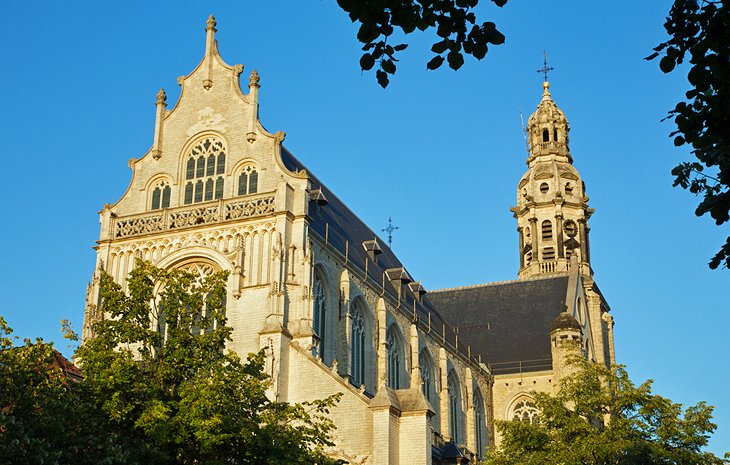
The late Gothic St. Paul's Church (Sint-Pauluskerk), which was started in 1517 but wasn't finished until 1639, is located in the center of the city on the Veemarkt (the area that formerly served as a cattle market). Around 1680, the Baroque clock tower was built.
The church suffered severe damage from a fire in 1968, and only the determined efforts of the neighborhood residents kept its interior decorations from being lost.
Paintings by Rubens, Jordaens, and Van Dyck may be found inside the cathedral. They include three paintings by Rubens, The Scourging of Christ (1617) in the left aisle, and Adoration of the Shepherds and Disputation on the Holy Sacrament in the left transept, as well as the outstanding Baroque confessionals by Pieter Verbruggen the Elder.
12. The Butcher's Hall, (Vleeshuis)
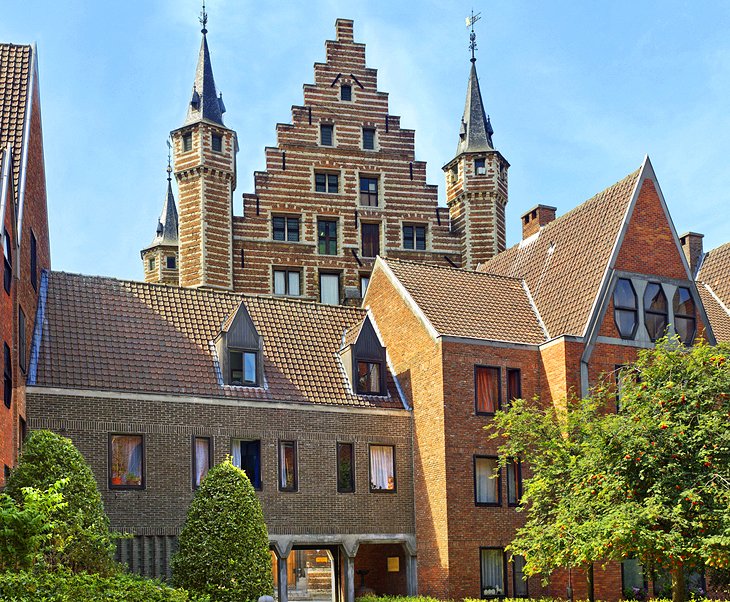
The former butchers' guild council chamber is one of the magnificent rooms in the late Gothic Butcher's Hall (Vleeshuis). The spectacular brick structure was purposefully placed next to the Scheldt when it was constructed in 1501-04, allowing the blood of slain animals to drain into the river.
The Vleeshuis is currently a museum of applied art and archaeology containing collections of weapons and armor, coinage, ceramics, furniture, sculpture, and woodwork from the prehistoric, Egyptian, Roman, and Merovingian periods.
One of its most cherished items is the Averbode Retable, a 16th-century representation of Saul's conversion made from Antwerp tiles by Pieter Coecke van Aelst.
A great collection of musical instruments, including the magnificent harpsichord from the studio of instrument-makers Ruckers, can be found inside the Vleeshuis.
13. Examine the Antwerp-Centraal Train Station
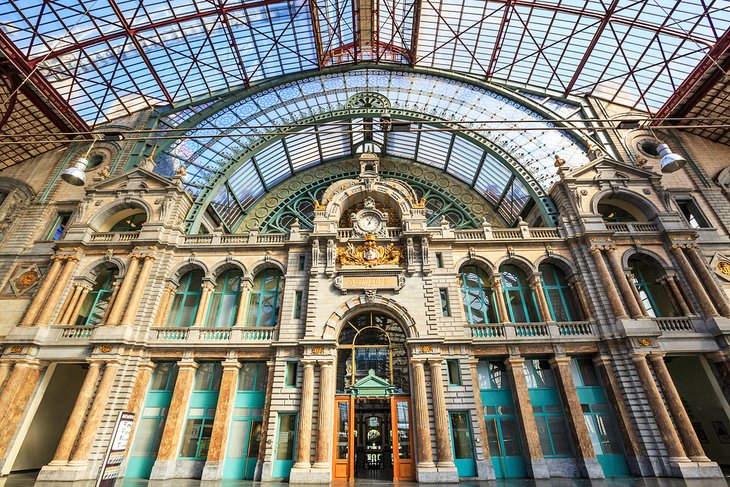
The Antwerp train station, also known as Antwerp-Centraal or Antwerpen-Central, is regarded as one of the most magnificent train stations in the entire world and one of the most attractive in all of Europe.
Even those who are not going by rail will value a quick glance inside this magnificent building, which goes by the nickname "Railroad Cathedral" as a monument to its grandeur.
It was historically noteworthy because it served as the first station for Belgium's public railway, which was the first of its kind in Europe when it was constructed between 1895 and 1905. The powerful, dramatic structure that Belgian architect Louis Delacenserie created has a timeless aesthetic all of its own. He drew inspiration from a variety of diverse architectural forms.
If you arrive by rail, the entrance hall will provide you with a regal introduction to Antwerp thanks to its tall brick arches and dome.
The Grand Place in Antwerp's old town is a short two kilometers to the east of the station, while Ruben's House is a little more than one kilometer to the northeast.
14. Cycle along the Havenroute (Port Tour)
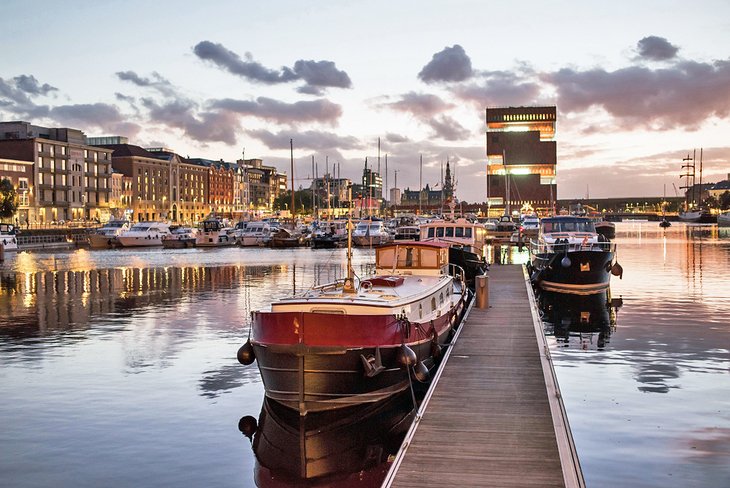
The Antwerp Tourist Office has laid out The Havenroute, a scenic route through the port district. You may easily tour the major city portions on foot, but if you want to travel further, you should rent a bike.
The Port of Antwerp completely supports its claim to be one of the largest in the world by being the second-largest seaport in Europe, behind Rotterdam.
More than 10,000 hectares are devoted to the harbor installations alone, and an additional 3,400 hectares are used for industrial purposes.
Starting from the Loodsgebouw (Pilot House) on the embankment north of the Steen, the Havenroute tour of the docks region heads north and passes the two oldest docks, the Bonapartedok and Willemsdok, almost immediately. At the extreme end, you can see the enormous Koninklijk Stapelhuis.
If you have a car or a bicycle, you can use the Havenroute to leave the city and travel 16 kilometers northwest of Antwerp, via the 17th-century Eenhoorn windmill, to Lillo, one of the few polder communities that managed to avoid being submerged by the port.
In Lillo, travelers have the option of continuing on to the enormous Berendrechtsluis, the largest lock in the world, or cutting the journey short by turning around and returning to Antwerp on the Havenroute via the Frans Tijsmanstunnel, which runs beneath the Kanaaldok.
15. St. James' Church (Sint-Jacobskerk)
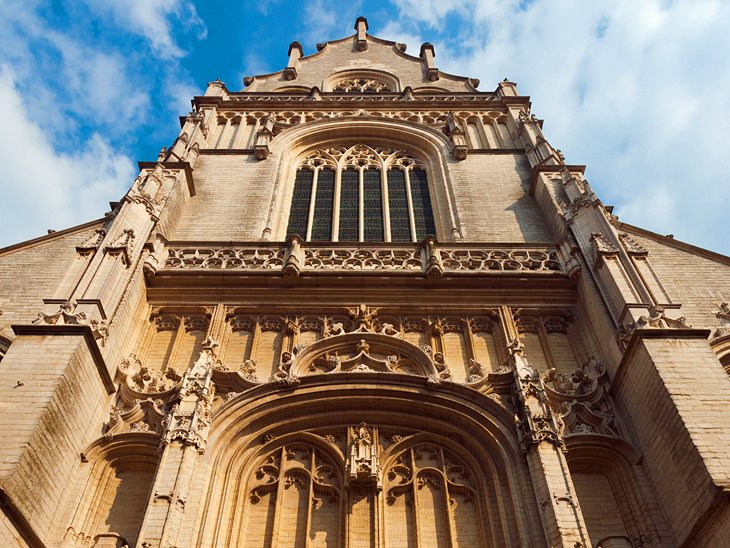
St. James' Church (Sint-Jacobskerk), one of the wealthiest ecclesiastical structures in Antwerp, has a lavishly opulent Baroque interior and is endowed with an excellent collection of works of art.
It was the place of worship for the wealthy families of the city, and they frequently hired well-known painters to create their personal chapels, altars, and tombs.
The main area of interest for tourists is the Rubens Chapel. It houses the artist's (1640) grave as well as that of other family members and is situated behind the high altar.
16. DIVA (The Diamond Museum) (The Diamond Museum)
With its sections on extraction, processing, and industrial application, DIVA (Antwerp's museum of diamonds, silver, and jewelry) examines all the various facets of the diamond trade.
The book also emphasizes the lengthy tradition of silversmithing and jewelry-making in Antwerp and how this tradition contributed to the city's prominence in the world diamond trade.
Together with displays of genuine cut and uncut diamonds as well as imitations of the more well-known stones, the museum's collections also feature an extensive collection of Belgian silverwork, ranging from delicate jewelry to beautifully embossed dinnerware.
A pop-up DIVA museum featuring a selection of the museum's diamond and silver collection is open in Antwerp's Grand Square (Grote Markt) during this time while the museum is temporarily closed for renovations until December 2022.

